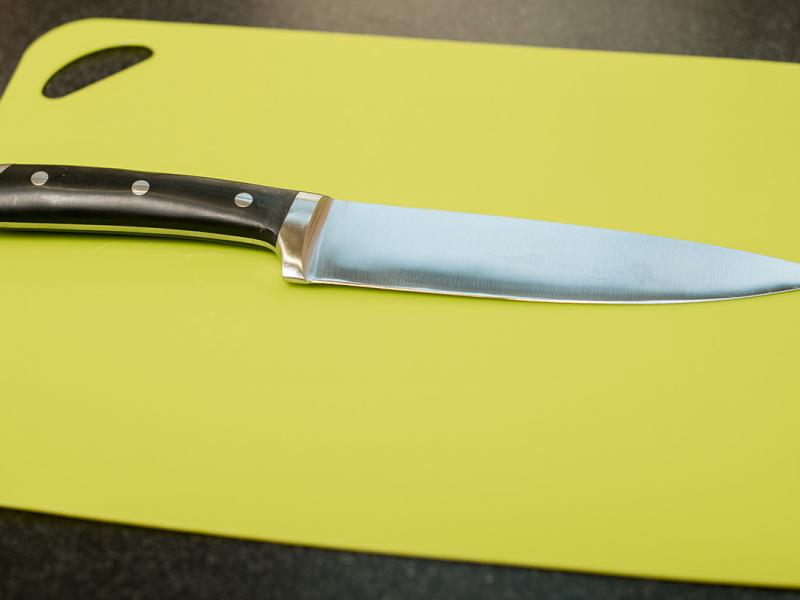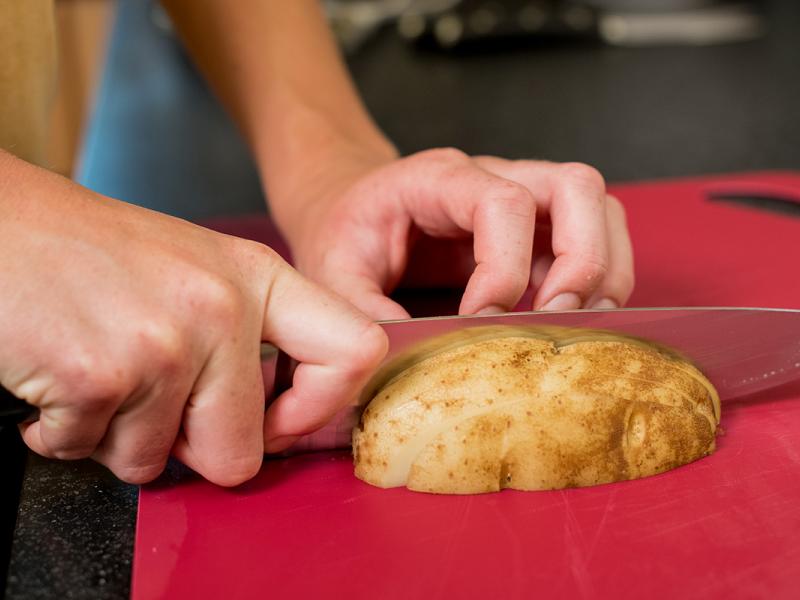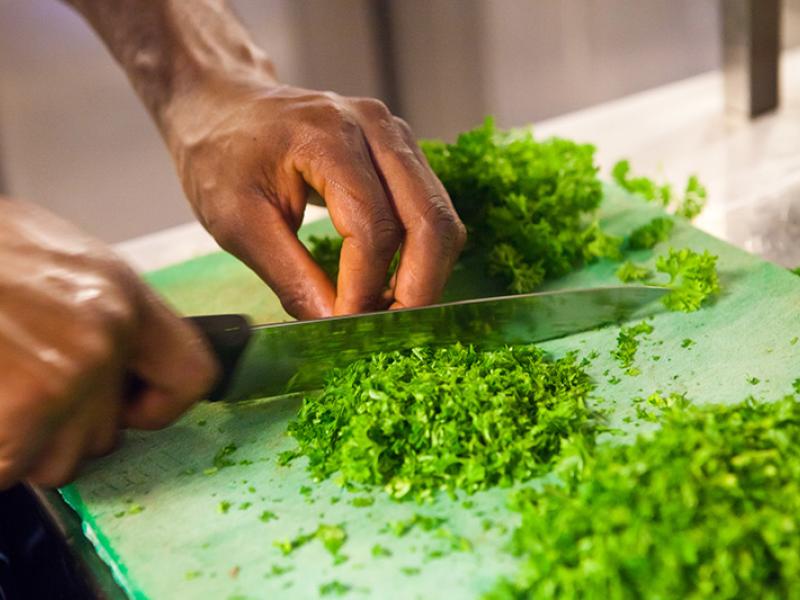Knife injuries are possible at home. Avoid injury by following a few safety tips.
- Never touch the blade of the knife.
- Cut foods away from your body and always use a flat surface.
- Use a non-slip cutting board. You can also put a damp towel under your cutting board to keep it from slipping.
- Use the right cutting tool for the job. This will make it easier and safer to create any dish!
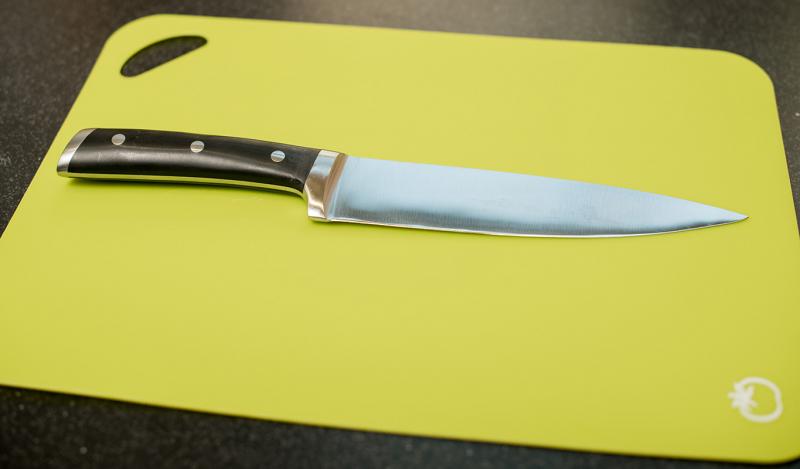
Chef’s Knife
Most commonly used for dicing, mincing, slicing and chopping. The 8 to 10-inch long blade allows for better control on the cutting board.
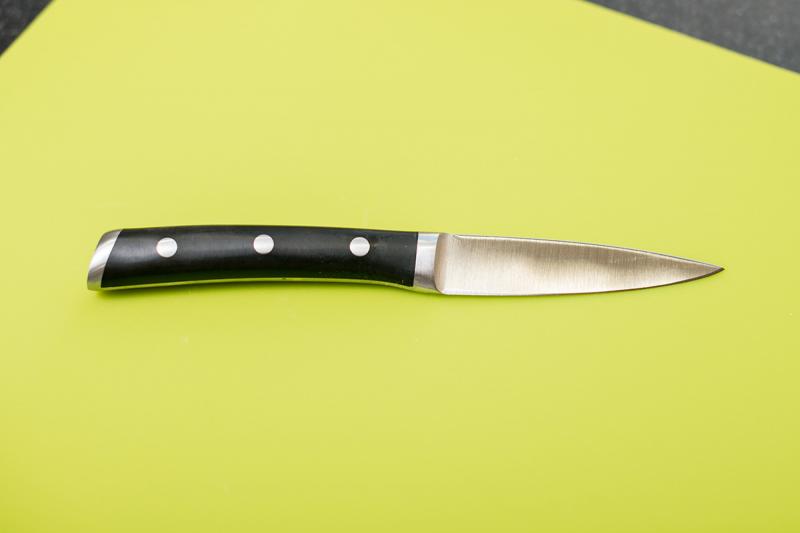
Paring Knife
Most commonly used for peeling, coring, and removing bruises and stems. The 2 to 4-inch long blade is easier to handle so it can be used for more detailed cuts.
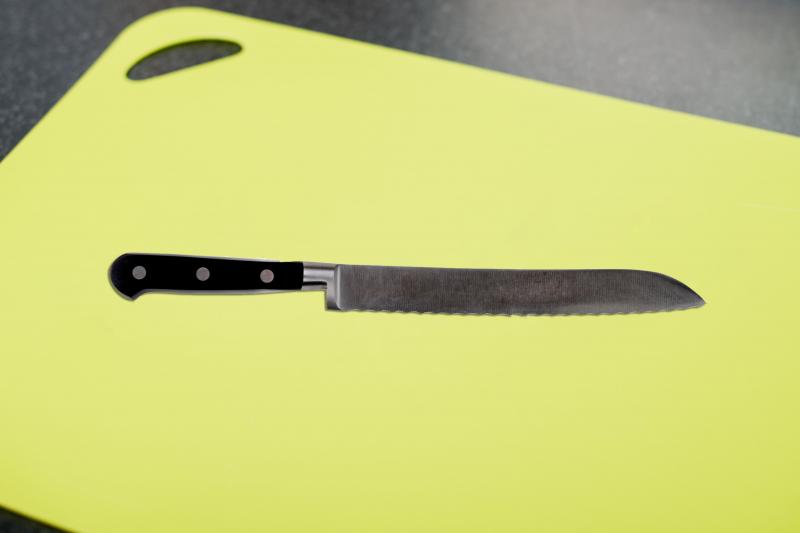
Serrated Knife
Most commonly used for soft foods because the scalloped edge can cut without smashing more tender items like tomatoes and bread. The blade is typically 8 to 10-inches long, but serrated knives can come in a variety of sizes.
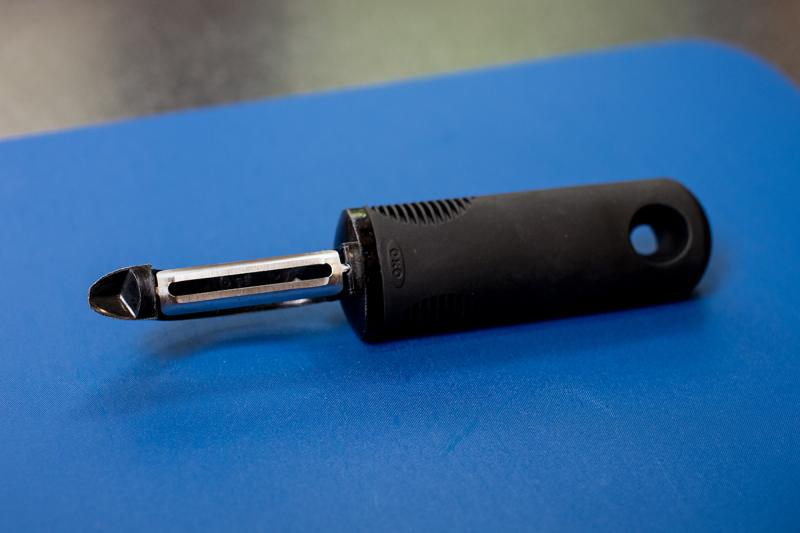
Peeler
Removes the outer layer of foods such as the skins on potatoes and apples. Peelers can come in many different shapes and sizes.
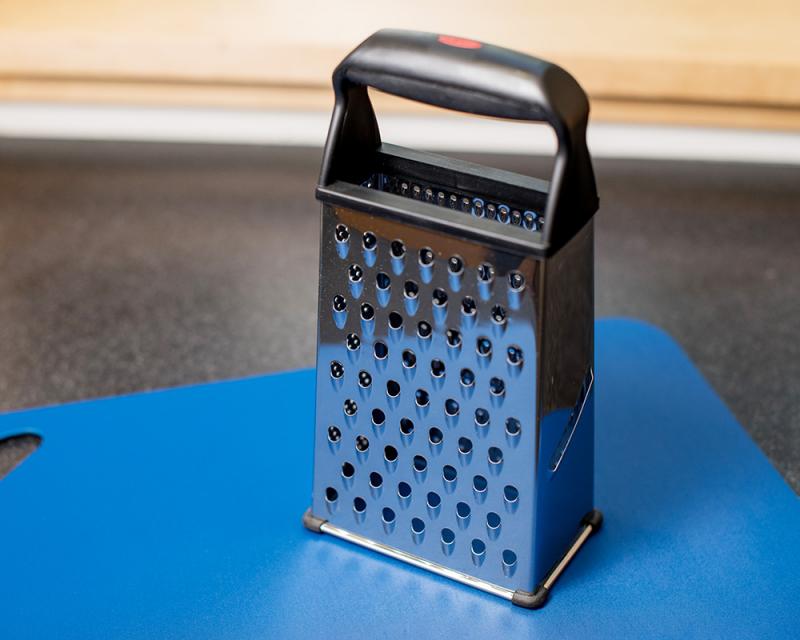
Grater
Shreds foods into smaller pieces. Grating food into smaller pieces may be helpful when melting cheese or for a specific shape or texture such as in hash browns.


